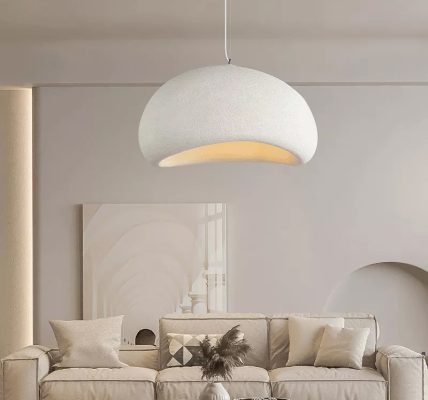Introduction: Why Binoculars Are Essential for Bird Watching
Bird watching is a popular hobby enjoyed by millions of people around the world. It allows individuals to connect with nature, observe the beauty of birds, and learn about different species. One essential tool for bird watching is a pair of binoculars. Binoculars enhance the bird watching experience by allowing for better observation and identification of birds.
Binoculars provide magnification, which brings distant birds closer and allows bird watchers to see details that would otherwise be missed. They also have an objective lens that gathers light, making it easier to see birds in low-light conditions. Without binoculars, bird watchers would struggle to see birds clearly and may miss out on important details that help with identification.
Understanding Binocular Specifications: Magnification, Objective Lens, and Field of View
When choosing binoculars for bird watching, it is important to understand the specifications that determine their performance. The two most important specifications are magnification and objective lens size.
Magnification refers to how much larger an object appears when viewed through the binoculars compared to the naked eye. For example, a pair of binoculars with 8x magnification will make an object appear eight times larger than it actually is. Higher magnification may seem desirable, but it also reduces the field of view and makes it harder to keep the image steady.
The objective lens size is measured in millimeters and determines how much light the binoculars can gather. A larger objective lens allows more light to enter the binoculars, resulting in a brighter image. However, larger objective lenses also make the binoculars heavier and bulkier.
Field of view is another important specification to consider when choosing binoculars for bird watching. It refers to the width of the area that can be seen when looking through the binoculars. A wider field of view allows for easier tracking of birds in flight and makes it easier to locate birds in dense foliage.
Types of Binoculars for Bird Watching: Roof Prism vs. Porro Prism
There are two main types of binoculars: roof prism and porro prism. The main difference between the two is the way the prisms are arranged inside the binoculars.
Roof prism binoculars have a straight-through design, with the objective lenses and eyepieces in line with each other. This makes them more compact and easier to hold, but they tend to be more expensive than porro prism binoculars.
Porro prism binoculars have an offset design, with the objective lenses and eyepieces not in line with each other. This design allows for a wider field of view and better depth perception, making them ideal for bird watching. They are also generally more affordable than roof prism binoculars.
Both types of binoculars have their advantages and disadvantages for bird watching. Roof prism binoculars are more compact and lightweight, making them easier to carry around. However, they may not provide as wide a field of view as porro prism binoculars. Porro prism binoculars, on the other hand, offer better depth perception and a wider field of view, but they can be bulkier and heavier.
Best Binocular Brands for Birding: Top Picks and Features
When it comes to choosing the best binoculars for birding, there are several top brands that are known for their quality and performance. Some of the top picks include:
1. Nikon: Nikon is a well-known brand in the world of optics, and their binoculars are highly regarded by bird watchers. They offer a range of models with different specifications to suit different needs. Nikon binoculars are known for their sharpness, clarity, and durability.
2. Zeiss: Zeiss is another reputable brand that produces high-quality binoculars for birding. Their binoculars are known for their exceptional optical performance and rugged construction. Zeiss binoculars are designed to provide clear, bright images even in low-light conditions.
3. Swarovski: Swarovski is a luxury brand that is synonymous with quality and precision. Their binoculars are known for their exceptional optical performance, durability, and ergonomic design. Swarovski binoculars are designed to provide a comfortable viewing experience even during extended use.
Each brand offers different features and benefits, so it is important to consider your specific needs and preferences when choosing the best binoculars for birding.
Choosing the Right Magnification for Your Birding Needs
Choosing the right magnification for your birding needs is crucial for a satisfying bird watching experience. The ideal magnification depends on various factors, including the type of birding you plan to do and the environment in which you will be observing birds.
For general bird watching, a magnification of 8x or 10x is usually recommended. These magnifications provide a good balance between image detail and stability. Higher magnifications, such as 12x or 15x, can make it harder to keep the image steady and may require the use of a tripod or other stabilizing device.
If you plan to do a lot of birding in open areas or during long hikes, a lower magnification may be more suitable. A magnification of 7x or 8x provides a wider field of view, making it easier to locate and track birds in flight.
On the other hand, if you plan to do a lot of birding in dense foliage or need to observe birds from a distance, a higher magnification may be necessary. A magnification of 10x or higher allows you to see more detail and brings distant birds closer.
It is important to note that higher magnification does not always mean better image quality. Higher magnifications can make the image appear dimmer and reduce the field of view. It is important to find a balance between magnification and other factors, such as objective lens size and field of view, to ensure a satisfying bird watching experience.
Lens Coatings and Quality: How They Affect Clarity and Brightness
Lens coatings and quality play a crucial role in the clarity and brightness of the images produced by binoculars. Lens coatings are applied to the surfaces of the lenses to reduce glare, improve light transmission, and enhance image contrast.
There are several types of lens coatings, including anti-reflective coatings, phase correction coatings, and dielectric coatings. Anti-reflective coatings reduce glare and improve light transmission, resulting in brighter images. Phase correction coatings correct phase shifts that occur when light passes through prisms, improving image contrast and sharpness. Dielectric coatings are applied to the prism surfaces to enhance light transmission and improve color fidelity.
The quality of the lenses also affects the clarity and brightness of the images. High-quality lenses are made from premium glass materials that minimize distortion and aberrations. They are also coated with multiple layers of high-quality coatings to maximize light transmission and minimize reflections.
When choosing binoculars for bird watching, it is important to look for models with high-quality lenses and multiple layers of lens coatings. These features will ensure that you get clear, bright images with accurate colors and good contrast.
Waterproof and Fog-Proof Binoculars: Benefits for Outdoor Use
Bird watching often takes place in outdoor environments, where weather conditions can be unpredictable. That is why it is important to choose binoculars that are waterproof and fog-proof.
Waterproof binoculars are sealed with O-rings to prevent water from entering the internal components. This makes them ideal for use in rainy or humid conditions, as well as near bodies of water. Waterproof binoculars can withstand being submerged in water for a short period of time without suffering any damage.
Fog-proof binoculars are filled with nitrogen or argon gas and sealed to prevent internal fogging. This is important because temperature changes can cause moisture to condense inside the binoculars, resulting in foggy images. Fog-proof binoculars are designed to withstand extreme temperature changes without fogging up, ensuring clear views at all times.
Choosing waterproof and fog-proof binoculars for bird watching provides several benefits. They allow you to continue birding even in wet or humid conditions without worrying about damaging your binoculars. They also ensure that you get clear, fog-free views even when there are sudden temperature changes.
When choosing waterproof and fog-proof binoculars, it is important to look for models that are fully sealed and have been tested to meet industry standards for waterproofing and fog-proofing.
Ergonomic Design and Comfort: Factors to Consider for Extended Use
Bird watching often involves spending long periods of time observing birds, so it is important to choose binoculars that are comfortable to use for extended periods. Ergonomic design and comfort are key factors to consider when choosing binoculars.
Ergonomic design refers to the shape, size, and weight distribution of the binoculars. A well-designed pair of binoculars should fit comfortably in your hands and be easy to hold steady. The eyecups should be adjustable to accommodate different eye relief distances, and the focus wheel should be smooth and easy to operate.
Comfort is also important when choosing binoculars for extended use. Look for models with padded straps and a comfortable neck strap or harness. Some binoculars also have a rubberized coating that provides a secure grip and reduces fatigue during prolonged use.
It is also worth considering the weight of the binoculars, especially if you plan to carry them for long distances or use them for extended periods. Lighter binoculars are generally more comfortable to carry and hold, but they may sacrifice some image quality and stability.
When choosing binoculars for extended use, it is important to try them out before making a purchase. Hold them in your hands, adjust the eyecups and focus wheel, and see how they feel. This will help you determine if they are comfortable to use for long periods and if they fit your hands well.
Budget-Friendly Binocular Options: Quality vs. Price
Binoculars come in a wide range of prices, from budget-friendly options to high-end models. While it is tempting to go for the cheapest option, it is important to consider the quality of the binoculars as well.
Budget-friendly binoculars can still provide good performance and image quality, but they may not have all the features and specifications of more expensive models. They may have lower-quality lenses and coatings, which can affect image clarity and brightness. They may also be less durable and not as well-sealed against water and fog.
That being said, there are some budget-friendly binocular options that offer good value for money. These binoculars may not have all the bells and whistles of high-end models, but they can still provide a satisfying bird watching experience.
When choosing budget-friendly binoculars, it is important to read reviews and do some research to ensure that you are getting a quality product. Look for models from reputable brands that have positive customer reviews. It is also worth considering refurbished or used binoculars, as they can often be found at a lower price without sacrificing too much in terms of quality.
Tips for Maintaining and Cleaning Your Bird Watching Binoculars
Proper maintenance and cleaning are essential for prolonging the life of your bird watching binoculars and ensuring optimal performance. Here are some tips to keep your binoculars in top condition:
1. Store your binoculars in a dry, cool place when not in use. Avoid exposing them to extreme temperatures or direct sunlight, as this can damage the internal components.
2. Use a lens brush or air blower to remove dust and debris from the lenses and other surfaces. Avoid using compressed air, as it can damage the coatings on the lenses.
3. Use a lens cleaning solution and a microfiber cloth to clean the lenses. Start by blowing off any loose dust or debris, then apply a small amount of cleaning solution to the cloth and gently wipe the lenses in a circular motion. Avoid using excessive pressure, as this can scratch the lenses.
4. If your binoculars get wet, wipe them dry with a soft cloth and allow them to air dry completely before storing them. Avoid using heat sources to speed up the drying process, as this can damage the internal components.
5. Avoid touching the lenses with your fingers, as this can leave fingerprints and smudges. If necessary, use a lens cleaning solution and a microfiber cloth to remove fingerprints and smudges.
6. Regularly check the focus wheel and other moving parts for any signs of wear or damage. If you notice any problems, contact the manufacturer or a qualified technician for repairs.
By following these tips, you can ensure that your bird watching binoculars stay in top condition and provide you with years of enjoyable birding experiences.
Conclusion: Recap of the importance of binoculars for bird watching and how to choose the right binoculars for your needs.
In conclusion, binoculars are essential for bird watching as they enhance the experience by allowing for better observation and identification of birds. When choosing binoculars for bird watching, it is important to consider factors such as magnification, objective lens size, field of view, prism type, lens coatings and quality, waterproof and fog-proof capabilities, ergonomic design and comfort, and budget.
By understanding these factors and considering your specific needs and preferences, you can choose the right binoculars for your birding adventures. Whether you are a beginner or an experienced bird watcher, investing in a good pair of binoculars will greatly enhance your enjoyment of this fascinating hobby. So grab your binoculars, head out into nature, and get ready to discover the wonders of the avian world. Happy bird watching!
If you’re an avid bird watcher, having the right equipment is essential. While bird watching binoculars are a must-have, there are other accessories that can enhance your experience. One such accessory is a pair of gloves. In this informative article on 51binoculars.com, you can learn how to choose the perfect gloves for your needs. From insulation and waterproofing to dexterity and grip, this article covers all the factors you should consider when selecting gloves for your bird watching adventures. So, don’t forget to check out this helpful guide on how to choose the perfect gloves before your next bird watching trip!









